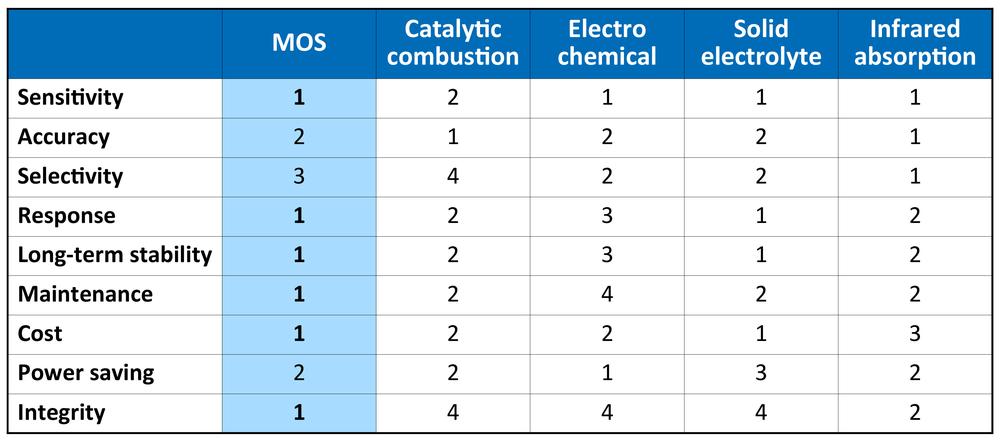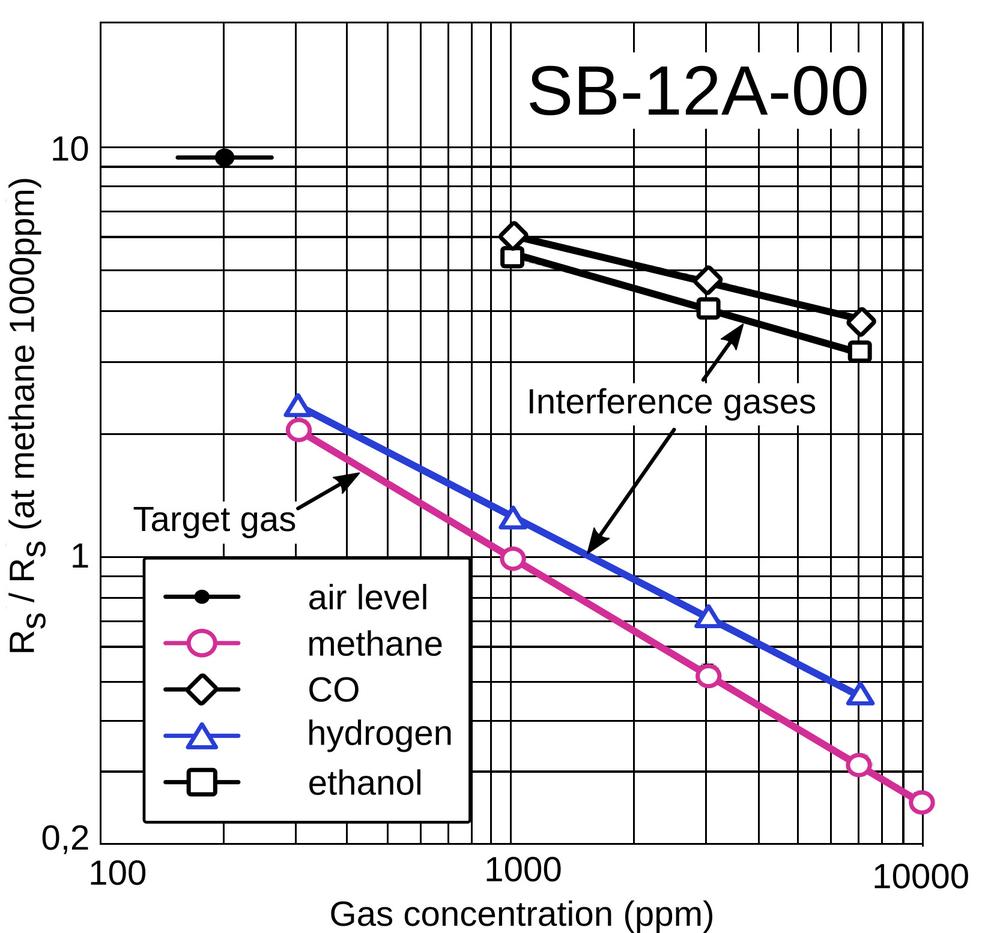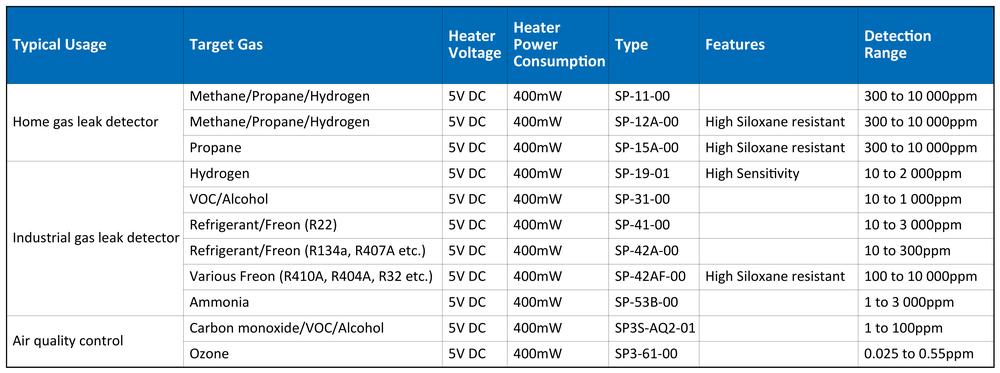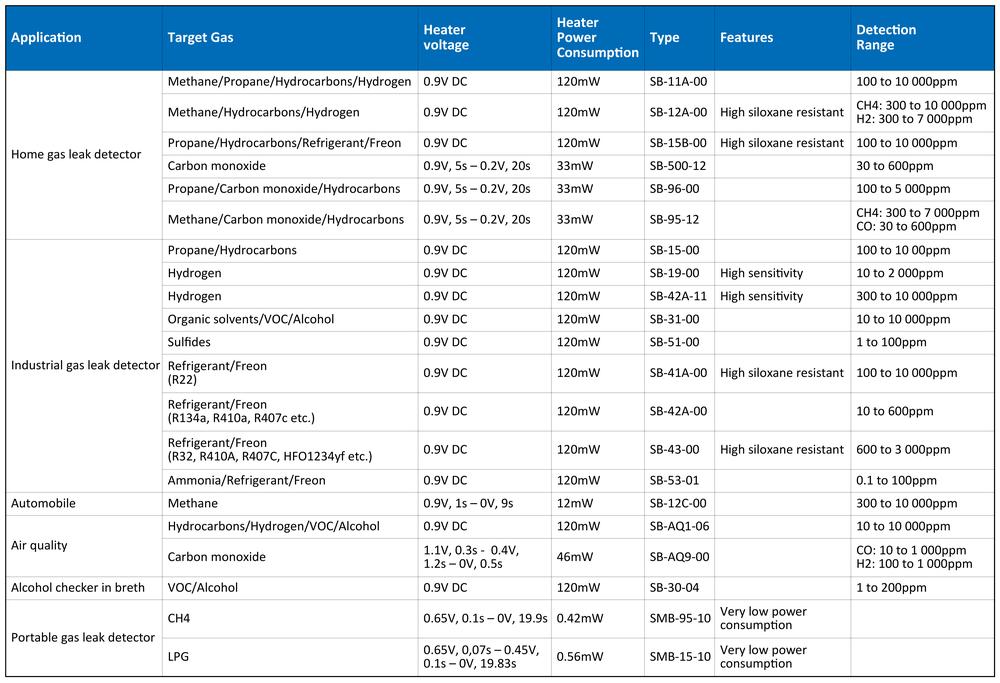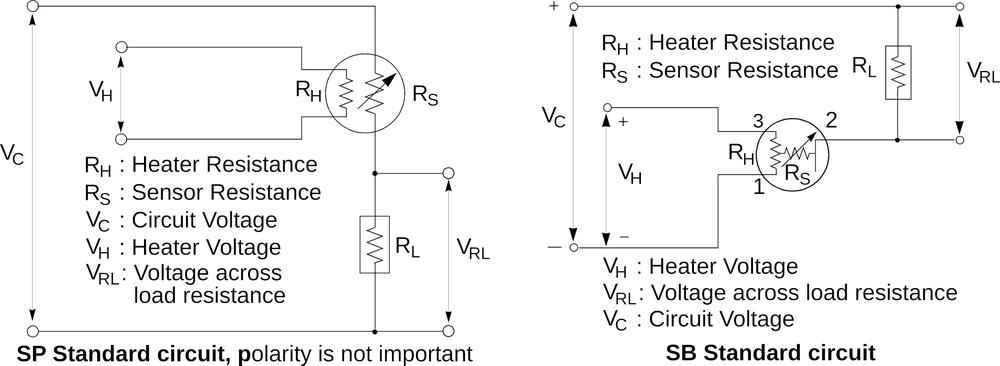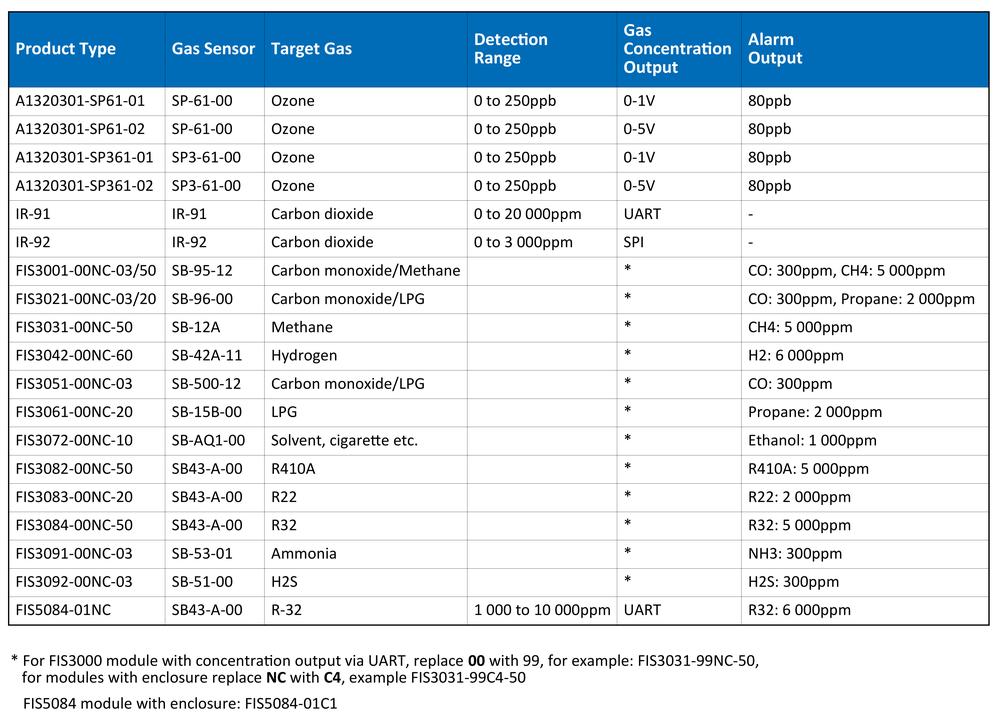Nissha FIS, Inc. is a Japanese company established on November 20, 1992. They have a strong R&D department and a team of 30 production technology/quality specialists. Nissha FIS production capacity is 12 million sensors per year.
Principle of Operation
The sensor includes a sensing element made of metal oxide semiconductor, typically SnO 2, which is an n-type semiconductor, and additives to increase sensitivity to the target gas. Such sensors are therefore called MOS sensors (metal oxide semiconductor sensors). The sensor also contains sensing electrodes and a heater.
Sensing element is heated to the optimal temperature for detection of a target gas. Typical temperature lies in the range of 300 to 450°C. In presence of reducing gases like H2, CO, NH3, CH4, etc., the resistance of sensing element decreases. On the contrary, in presence of oxidizing gases like NO2, oxygen, ozone, CO2 etc., the resistance of sensing element increases.
MOS Sensors Features
MOS sensors need oxygen for their normal work. Datasheet parameters are valid for the standard oxygen concentration of 21%, the absolute minimal required concentration is 18%.
MOS sensors excel in sensitivity, response time, long-term stability, cost and integrity.
The disadvantage is low selectivity. It means that the sensor is most sensitive to target gas but it also has some degree of sensitivity to other gases. Low selectivity, however, is also an advantage for air quality detectors that measure the concentration of VOC that includes hundreds of gases.
Presence of siloxanes in the air affects all MOS sensors, it decreases the sensor’s resistance in the clean air, decreases sensitivity to target gas and increases response time.
Siloxanes are widely used chemicals in many personal care products, cosmetics and silicone polymers used in industry and medical devices.
Sensors are immune to siloxanes to some extent, for example, EN 50194-1 (2009). Electrical apparatus for the detection of combustible gases in domestic premises requires that the device has to work properly after exposing to 10 ppm of HMDS (Hexamethyldisiloxane) for 40 minutes.
Sensor Construction
SP series
SP series sensors use a substrate in the form of a sheet of aluminium oxide (alumina) with dimensions of 2x2 mm. Sensing element is placed on the top side of the substrate and heater on the bottom side. The heater has to be permanently connected to VH(on)=5V, power consumption is typically 400mW.
SP Series Overview
The table is available in PDF format.
SB series
Sensing element has a form of bead with 0.3x0.5mm size. The first sensors from SMB series, SMB-95-00 (methane) and SMB-15-00 (LPG), use an even smaller sensing element, 0.12x0.15mm. The heater coil is made of platinum, which makes it possible to measure the temperature of the heater because the relationship between temperature and resistance of platinum is well known. The heater has to be permanently connected to VH(on)= 0.9V for the majority of sensors. Power consumption is typically 120mW.
SB-500-12 (CO), SB-95-12 (methane/CO ), SB-96-00 (CO/LPG) and SB-AQ9-00 (cigarette smoke), SB-12C-00, SMB-95-00 (methane) and SMB-15-00 (LPG) sensors allow powering the heater by periodic voltage pulses, resulting in a reduction of the average energy consumption. Average power consumption depends on the duty cycle and can be in the range of tens of mW for SB sensors and less than 1 mW for SMB sensors.
SB Series Overview
The table is available in PDF format.
Schematics
Worth to Mention
Sensors are not calibrated. It is up to you to calibrate your device.
Sensor Modules
Nisha FIS main products are sensor modules. They have the know-how and the necessary equipment for the design, production and calibration of modules. Designing with MOS gas sensors is not a trivial task.
You need to know:
- The sensitivity of the sensor to target gas and interference gases
- Environmental influences such as oxygen concentration, temperature, siloxane concentration, humidity, shock, vibration, etc. on the sensor parameters
- Long term stability of sensor parameters
- Safety standards that apply to gas detectors
You will also need equipment such as gas sources, gas chambers, reference gas concentration meters, temperature chamber, etc.
Sensor Modules Features
The main application of the modules is the detection of the presence of gas. If the target gas concentration exceeds the alarm threshold, the module turns on alarm output. Typical threshold accuracy is ±20%. For example, the alarm threshold of the FIS5084 module is 0.5% R32 refrigerant. The manufacturer specifies that the module should signalize alarm if R32 concentration > 0.6% and 0.4% concentration shouldn’t trigger the alarm.
The modules maintain the threshold accuracy within a specified range throughout the life of the module, which is usually more than 5 years if the modules operate within the gas concentration ranges for which they were designed.
Modules can be ordered with UART output that provides gas concentration, alarm statistics etc. Modules have a typical measurement accuracy of ±20%.
Sensor Modules Overview
The table is available in PDF format.
Sensor or module? Which one to choose?
Nisha FIS technical support for gas sensors is limited and typically available only for direct customers and therefore we recommend using a module.
The ratio between the average price of the module and the price of the sensor is 5 for quantities up to 500 pieces, 4 for 500 to 1,000 pieces, 2.7 for 1,000 to 3,000 pieces and 2 for 3,000 to 5,000 pieces.
If you are interested in other Nissha FIS products or if you need advice, please do not hesitate to contact us at fis@soselectronic.com.
Do you like our articles? Do not miss any of them! You do not have to worry about anything, we will arrange delivery to you.




